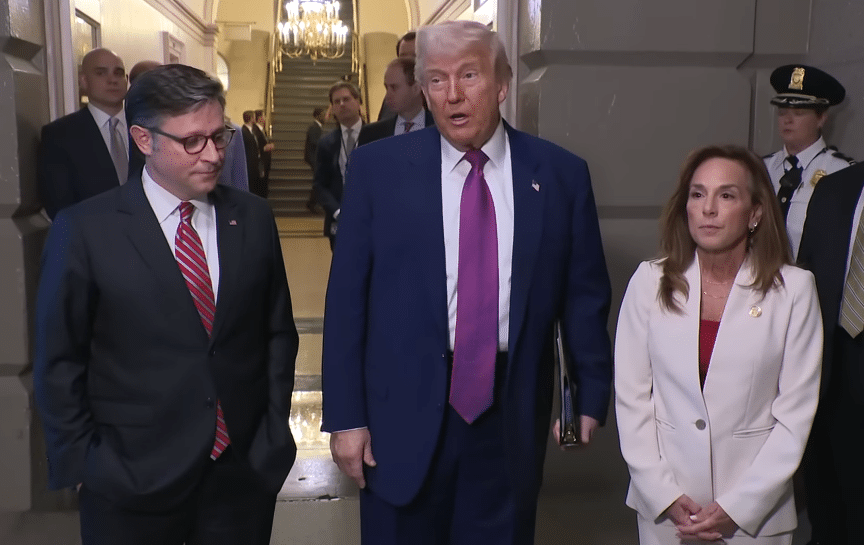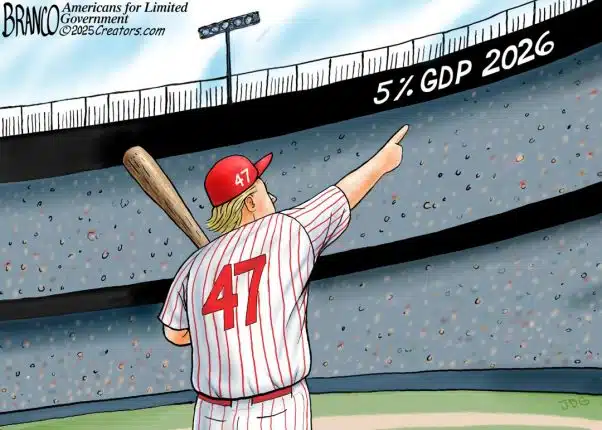
One bright spot of the economic data the past year has been that home prices have cooled as home sales have dropped amid higher interest rates and continued sales of mortgage-backed securities by the Federal Reserve, with the Freddie Mac Home Price Index almost frozen at about $300,000 nationally in September, only up 0.9 percent from a year ago while existing home sales have dipped in down to 3.9 million in June 2025 from 4.2 million in December 2024.
These are the first real savings being felt by the American people in more than three years following the great inflation that followed the torrent of monies spent, borrowed and printed into existence to combat Covid, about $6.3 trillion which found its way into the M2 money supply. In addition to buying treasuries, as is it usually does during a recession, by March 2022, the Fed’s balance sheet for mortgage securities exploded to $2.7 trillion—with price increases not seen since the housing bubble—that month year over year prices were increasing 18.5 percent.
Hit with crippling inflation including home values exploding 35 percent in the Freddie Mac index, the Fed began selling again — it currently owns $2.07 trillion of mortgage securities — and then prices slowed to 1.6 percent annual growth by March 2023 and then accelerated again to 6.6 percent by December 2023. In December 2024, it slowed to 4.2 percent. The latest reading in September 2025 had prices only growing 0.9 percent the past twelve months as demand has cooled considerably.
Selling the mortgage securities, a part of the reason rates are higher at the moment, home purchases slowed down and housing markets have cooled. If the Fed were to keep going, prices might even go down a little. Good.
Since Feb. 2021, shelter in the Consumer Price Index has jumped 27.15 percent according to Bureau of Labor Statistics data, but average weekly earnings for private sector employees only increased 20.07 percent. Even the past year, shelter is up 3.57 percent but earnings are still only up 3.38 percent. So, the gap is still widening, with an entire generation not only missing out on home purchases but is also faced with crippling rents, not because of interest rates per se, but because the prices including rents are still far too high.
The good news as mentioned earlier is that home prices are slowing dramatically, with the Freddie Mac Index only up 0.9 percent the past year after skyrocketing. Home values have a lot of room to go down.
We are nowhere near the negative equity crisis of 2007 and 2008. Far from it. We have the oppose problem: Unaffordability.
Whereas, in December 2008, prices in the Freddie Mac Home Price Index were collapsing 12.3 percent year over year. The intervention followed the wave of millions of foreclosures as homeowners trapped in negative equity traps. Then-Fed Chairman Ben Bernanke dramatically expanded the Fed’s balance sheet by trillions including what eventually became $1.77 trillion of net purchases mortgage-backed securities by December 2017.
A year later, by December 2009, the Fed had bought about $900 billion of mortgage-backed securities. The prices were still collapsing but the deflation had slowed to prices dropping 3 percent. In 2010, it bought another $100 billion as Congress extended a homebuyer’s tax credit, an deflation expanded in 2010 as priced dropping 4.8 percent. With prices hitting bottoms in 2011 — deflation slowed to 2.7 percent that year — the Fed switched to selling about $50 billion of mortgage securities. In 2012, it added another $100 billion, to about $950 billion, as markets finally recovering and home prices finally increasing 6 percent.
And then, in 2013, to finish it off, Bernanke went big, bought another $500 billion as home values exploded 10 percent. Again, by the end of 2017, following the reign Janet Yellen, the total went from $1.5 trillion to $1.7 trillion. From 2014 through 2017, home prices grew between 6 and 7 percent a year.
Then in 2018, under Jerome Powell, the Fed began selling again, taking mortgage securities down to 1.4 trillion by December 2019, by which time home inflation had slowed to 4.3 percent.
Housing was becoming more affordable relative to incomes but suddenly Covid struck and the Fed resumed buying amid the global lockdowns. But there was no negative equity crisis during Covid, borrowers were already being granted forbearance and in hindsight it becomes hard to rationalize the mortgage securities purchases. Instead, prices have skyrocketed. Now home sales are slowing down because home values are so unaffordable.
The Fed had a heavy hand in this problem but now the Fed has stopped selling mortgage securities at its last meeting? Why? Take the air out.
If the Fed kept selling, interest rates would keep getting lower—despite Fed asset sales and without any net purchases, 30-year mortgages still tumbled from a peak of 7.8 percent in September 2023 to 6.2 percent.
Meaning, even as the economy cools, the Fed could keep selling mortgage securities and mortgage interest rates would keep going down as the market for treasuries continues to cool, but perhaps at a slower pace than treasuries, causing home prices to continue tumbling to where they need to go to put home ownership back in reach for more Americans. Even pausing home values for another year, if that’s all that was achieved, would help as incomes and earnings to catch up.
Why would we want to juice the market again? Do we want the prices to go up or down? Rates are coming down all on their own. That’s not the problem. There’s still a lot of air that could come out of the housing market. Again, like during Covid, there is no negative equity crisis and no foreclosure crisis. If there were, the Fed could resume asset purchases. That’s not where we are now.
Robert Romano is the Executive Director at Americans for Limited Government Foundation.






